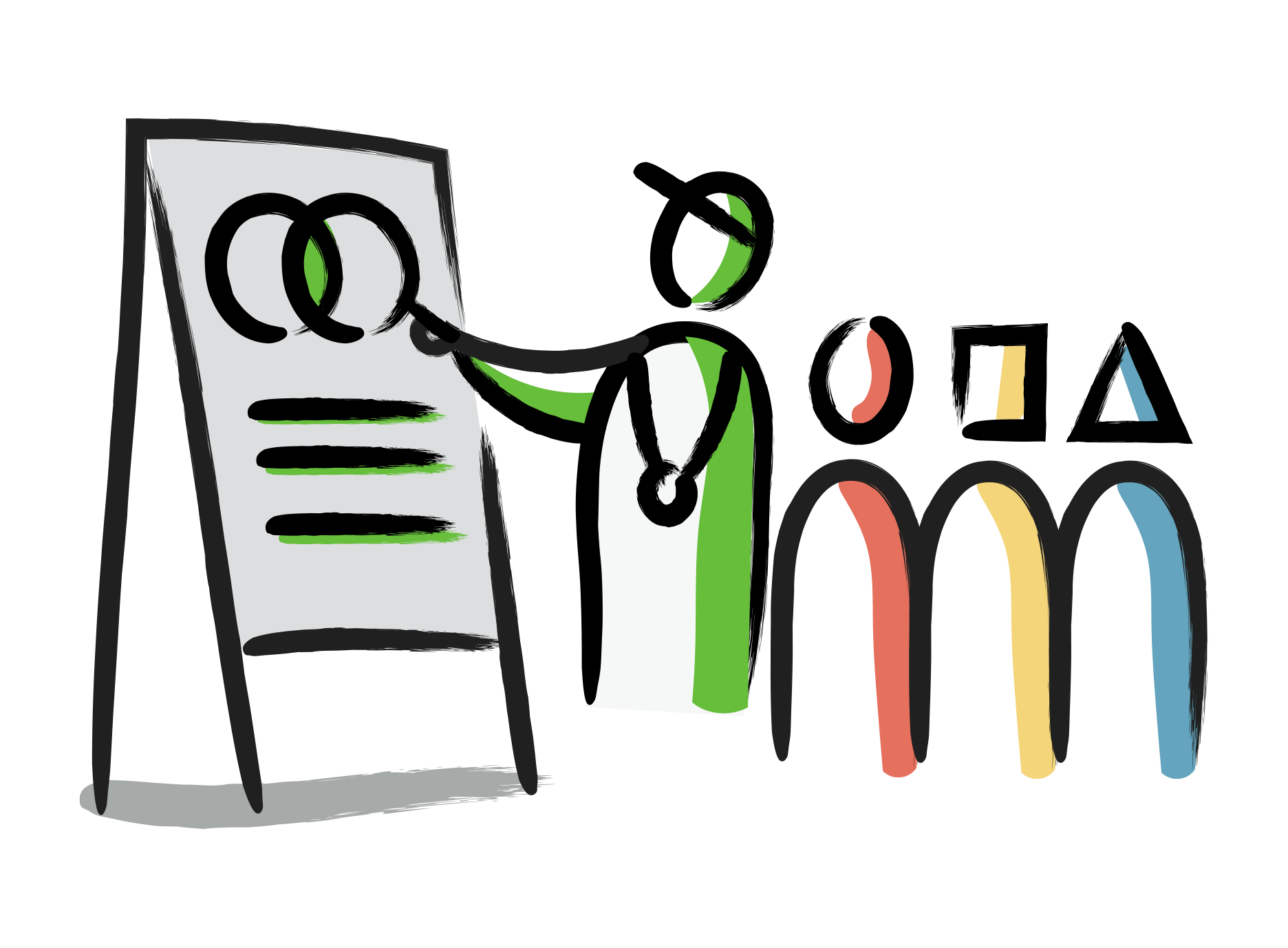Is Your Organization Learning at the Pace of Change?
Our organizations are competing amidst rapid change and leaders are driving teams to innovate, devise the next BIG thing, be first to market and/or provide best-in-class service. In our recent ebook, Five Mistakes Leaders Are Making and How to Fix Them, we discuss a misguided focus on over-driving performance where refocusing on organizational resiliency can improve long-term sustainability and growth. A healthy organization requires a balance of drive, quality, creativity, and connection. We are social beings working within socially constructed organizations and whether or not employees are able to harness opportunities to learn within those organizations will contribute to long-term success or failure.
Why Don’t Employees Take Advantage of Independent Learning Opportunities?
Information is Out There
While many barriers to education are coming down through free and on-demand access to educational technology resources like Khan Academy, TEDx, Lynda.com and EdX, individuals are still hesitant to pursue independent learning. Despite the thousands of courses of study available to individuals at low or no cost on almost an unlimited number of subjects, employees are not flocking to enroll in such programs. What’s holding them back?
“If I Only Had the Time”
Time is certainly a constraint and what we often hear from employees is the pressure they feel from not having enough of it. When they are not at work (be that physically or remotely), they are trying to balance the rest of their lives with all of the complexity that may involve. That time may be focused on family in whatever form that takes from strengthening their bond with their partner, to raising and schooling kids, caring for aging parents or finding new ways to creatively be connected to extended family. Meanwhile, employees also need time for other outlets - time with friends, to focus on personal health and fitness, to pursue hobbies and explore new interests. All of the things that bring joy to our lives.
Pressure to Perform and Compete
While at work, most employees are diligently focused on doing their jobs at any level in the organization and they take that work seriously. Many do not want to set aside the needs of their clients or their teams to pursue some course of study, even when it may pertain to enhancing their on the job skills or career development. Whether real or perceived, the pressure employees feel to perform and compete is significant. We often see and reflect on KPIs to measure a variety of ways that we are or are not meeting key business objectives. This alone poses a challenge to employees who want to learn but don’t feel able to shift their focus away from organizational priorities lest their performance metrics might be negatively impacted.
Let’s Not Forget About Learner Safety
Innovation requires curiosity, creativity and drive, and the extent to which individuals and teams are comfortable asking questions, exploring, taking risks, experimenting, and failing will depend on how safe they feel it is to do so. In his book, The Four Stages of Psychological Safety, Timothy Clark describes his second stage, learner safety, as meeting the basic human need to learn and grow, which allows individuals to feel safe throughout their engagement in the learning process. The absence of learner safety, he cautions, results in employees navigating in a state of risk that is driven by fear.
A fear-based work environment cannot promote organizational health and resiliency, nor can it drive innovation and competition. As social creatures, employees will focus their energy on trying to create safety for themselves, and in a hostile work environment they will do so by disengaging, self-censoring their ideas, and avoiding expressing dissent so that they may also avoid punishment and ridicule. Clark maintains that the presence of fear in an organization reflects the weakness of its leadership. As we think of culture as a shadow of the organization, that fear can result in a dark reflection being cast by leaders across the organization. (Read more on this topic: Leading Remote Teams and Organizational Culture).
In contrast, a resilient organization provides a culture that supports learner safety where employees are encouraged to co-create, express views that differ from their leaders, and explore alternative ways of doing things. Employees feel safe to try, to fail, to seek feedback, to reflect on their mistakes and to try again. As Stanford psychologist, Carol Dweck found in her research, students thrive in environments that promote “social belonging”. That is, where students are engaged in one-on-one interactions with their instructors who express confidence in their abilities to learn and whose peers provide them with a sense of belonging in a learning community. Dweck found that this sense of social belonging drives motivation and students believing in their own capacity to learn.
A word of caution
If you’re reading this and saying to yourself, “I don’t have a fear-based culture” or “This isn’t relevant to the individuals, teams, divisions or companies I work with,” please take a moment to pause and reflect on the truth of this sentiment. Our own biases can sometimes get in the way of us seeing things from the perspective of others, including our employees and learner safety is a critical factor in whether or not our organizations can learn at the pace we need them to.
How Well Is Your Organization Learning?
Creating a Culture of Learning
In the workplace, it is our leaders who are responsible for creating a culture of learning. As stated by Clark, “Learners who feel safe are far more willing to practice at the edge of their expertise, to experiment, solve difficult problems and to reflect on their performance.” If we want employees to be creative and innovative, to stretch their experiences, take on new responsibilities, and solve complex problems, our organizations must invite employees to learn, to embrace their curiosity, to make it safe for them to solicit feedback from their peers and from us, to encourage reflection, and to support them through failures.
Leaders must consistently provide that context. This requires engagement throughout our employees’ learning processes from expressing confidence in their abilities, to setting high expectations, to encouraging them along the way and providing open channels to work through challenges. It is our responsibility to remove the fear of repercussions from failure for them so that they are safe to take the personal risks necessary to learn, grow, share, create and innovate.
Modeling our own failures and willingness to learn requires vulnerability but inspires bravery. When we drop the pretense that we have the answers and welcome new and conflicting perspectives, we demonstrate our capacity to learn. When we expose our own failures and invite others into our retrospective processes, we engage them in building an understanding that failures lead to progress. Like in the Agile practice of Scrum, we inspect, we learn, and we adapt.
Creating a Community of Learners
Providing time and space for independent learning, however, is not enough. This goes back to humans being social creatures who thrive when they feel a sense of social belonging and when they can learn, not in isolation, but in context. Implementing a learning community where employees have regular opportunities to learn and share together as part of the work they do for the organization is critical. Learning is not outside of their work, rather, it is part of it and something they do together.
Engaging functional and cross-functional teams in learning together is critical to developing a community of learners who are able to see things not only from their perspective but from a vantage point gained from learning about others’ perspectives, experiences and skills. Creating time for learning together should be deliberate but does not have to be overly complex, nor hugely expensive. Incorporating regular retrospectives into all of our work together enables learning to occur routinely and enables us to identify things that held us back, learn from mistakes and adapt our approach. Doing so on a regular basis and not only when things go awry (like a post-mortem) helps participants feel comfortable engaging and that the purpose of the retro is not to find someone to blame because something went wrong but rather to collectively learn how to continually improve. Lunch and learns enable peer teaching to occur in less formal environments, building camaraderie, highlighting individual’s strengths and enhancing understanding across departments. Book groups can provide for focused discussion around any variety of topics from organizational culture to addressing diversity issues head on to building knowledge and understanding around a key focus area for the business.
Invest in Developing Teams of Learners
Investing in next-level learning opportunities as a team can be invaluable. Learning together and in context provides a foundation for learner safety and the benefits can be far more than what may appear as the learning objectives on the course or program syllabus. Whether it is sending an entire team of developers to learn Agile engineering practices or investing in leadership development for a management or executive team, the shared learning experience can be dynamic and powerful. Building a sense of belonging, synthesizing new information and insights, learning from peers, and working through an experience together for the benefit of the individual, the team and the larger organization carries back over to the workplace. The team can draw not only from the actual course teachings but from their shared learning experiences as they approach new challenges.
As discussed in a recent blog on Leading Remote Teams and Organizational Culture, a successful organization is not tied to its employees working in the same physical space, however, it does depend on an intentional culture of collaboration. Learning together fosters such collaboration, even when that learning may not occur in a physical classroom.
Retaining Top Talent and Attracting New Talent
Demand for employees who are able to compete in a fast-paced, rapidly changing environment is high. The ability of those employees to adapt quickly, to be creative, to be innovative, can be attributed in part to many of them being life-long learners. Our organizations and our leaders have a responsibility to continue to develop employees, not just to lure them in with a competitive compensation package. When we opt not to take that responsibility seriously, we risk losing our top talent to an organization that will and the cost of employee turnover is high.
While some of today’s leaders may have worked their way up the ladder within a single company, employees today are much more likely to build their experience working for several different organizations over time. Opportunities to advance often require leaving one organization to seek experience and openings at another. However, it is possible to minimize flight risk for top talent who may otherwise feel stagnated by taking a sincere interest in understanding and encouraging their ongoing learning interests and their career development path. Include personal development goals in your employee appraisal process. When possible, help fund employee learning opportunities not only for those whose roles require continuing education but for everyone who wants to learn. Encourage employees to carve out time for learning during their workdays (and model that behavior yourself). Create an environment that helps employees meet their fundamental need to continue to learn and grow.
Organizations with cultures that support employee development and continual learning opportunities will also be more apt to attract and recruit employees who share that passion. Including information about learning-related benefits and practices in recruitment efforts and sharing that information with candidates during pre-employment engagement can help to screen and select employees who will thrive in a learning environment.
Conclusion
In this fast-paced world of work, learning is imperative to maintain a competitive advantage. As leaders we must foster a context of social belonging in which our employees feel safe and inspired to learn and grow. As they do, so too do our organizations through new ideas to serve changing and expanding markets, opportunities to create new ways of doing things and the ability to learn and adapt at the rate of change.
About the Author
Tracey Wilson has over 20 years of experience in operational leadership in organizations ranging from small startups and service providers to large financial institutions. Tracey lives in the Joshua Tree, California area with her partner, Dave, and a small menagerie of four-legged and feathered critters. Her background is in sociology and education, which she draws from in her work at Agile Leadership Journey and in the local youth development program she co-founded and co-chairs, the Yucca Valley Antlers. When she's away from the office, she can be found camping, hiking, tending her garden, reading a book, or spending time with family and friends.









